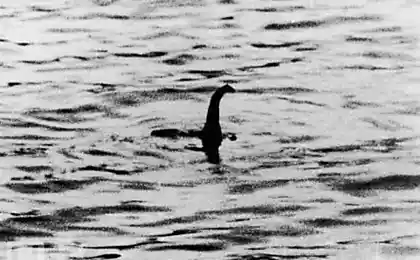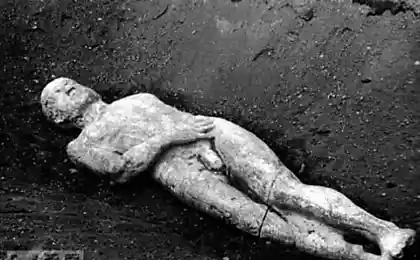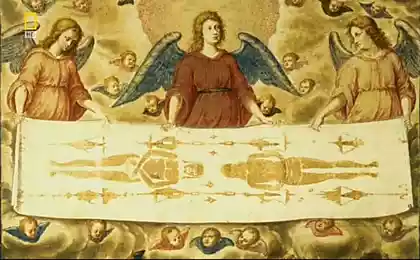599
Shroud of Turin - is now open access
Yesterday, in Turin for the first time in the last ten years, the Catholic Church has made available to the public in one of its most important relic - the so-called "Shroud of Turin» (Sindone di Torino) - four-meter linen, in which, according to legend, Joseph of Arimathea wrapped the body of Jesus after his sufferings on the Cross and death. The debate about the authenticity of the relics are carried out is not the first decade, as until now it was not possible to accurately set the time of manufacture of the web. Numerous studies each time led to the opposite result.
2 photos via drugoi

Before the XIII century the Shroud was kept in the Cathedral of St. Sophia of Constantinople, was exhibited there for everyone to see on Friday and there is evidence of people who have seen her there. After the invasion of the Crusaders in 1204 the relic disappeared and reappeared 150 years - ostensibly the Templars kept her and the Count de Charny Zhofre publicly announced that the shroud is from him. The church then were strongly opposed - Earl could not explain how the relic ended up in his castle. An attempt to show the public the Shroud thirty-five years (1389) repeated the Count's son - he enlisted the support of the Pope and tried to put the canvas in a specially built for this church near Paris. The local Bishop Pierre D'Arcy wrote a memorandum on this subject, in which he declared the Shroud a fake, and the work of the artist. In 1390 Pope Clement VII issued a verdict: the shroud can be displayed in the church, but only if at the same time to explain that this is not currently the canvas, in which Joseph of Arimathea wrapped the body of Christ and his work of art reproduction - icon. In 1452, the granddaughter of the Count de Charny gave the shroud Duke of Savoy, in the cathedral of which the relic was kept until then, until it was moved to Turin in 1578. Since then, and to date the Shroud is kept in the Cathedral of St. John the Baptist.
Of particular interest in the shroud originated after 1898, the photographer Secondo Pia took pictures and relics found on the negative image of the image of a human face. It was decided that on the shroud imprinted face and body of Jesus Christ.

Source:
2 photos via drugoi

Before the XIII century the Shroud was kept in the Cathedral of St. Sophia of Constantinople, was exhibited there for everyone to see on Friday and there is evidence of people who have seen her there. After the invasion of the Crusaders in 1204 the relic disappeared and reappeared 150 years - ostensibly the Templars kept her and the Count de Charny Zhofre publicly announced that the shroud is from him. The church then were strongly opposed - Earl could not explain how the relic ended up in his castle. An attempt to show the public the Shroud thirty-five years (1389) repeated the Count's son - he enlisted the support of the Pope and tried to put the canvas in a specially built for this church near Paris. The local Bishop Pierre D'Arcy wrote a memorandum on this subject, in which he declared the Shroud a fake, and the work of the artist. In 1390 Pope Clement VII issued a verdict: the shroud can be displayed in the church, but only if at the same time to explain that this is not currently the canvas, in which Joseph of Arimathea wrapped the body of Christ and his work of art reproduction - icon. In 1452, the granddaughter of the Count de Charny gave the shroud Duke of Savoy, in the cathedral of which the relic was kept until then, until it was moved to Turin in 1578. Since then, and to date the Shroud is kept in the Cathedral of St. John the Baptist.
Of particular interest in the shroud originated after 1898, the photographer Secondo Pia took pictures and relics found on the negative image of the image of a human face. It was decided that on the shroud imprinted face and body of Jesus Christ.

Source:























